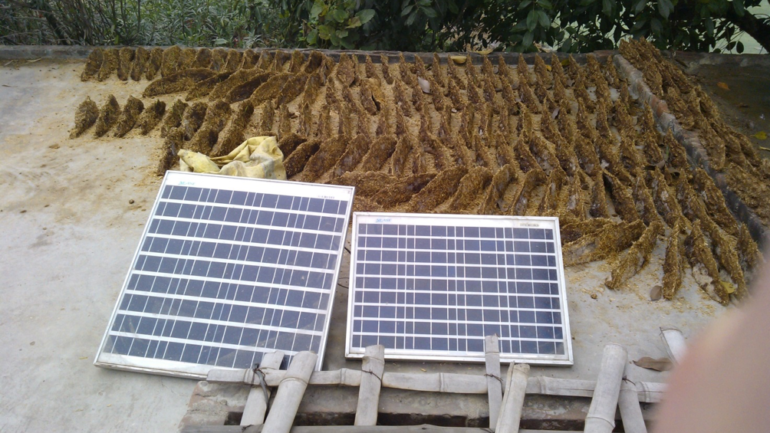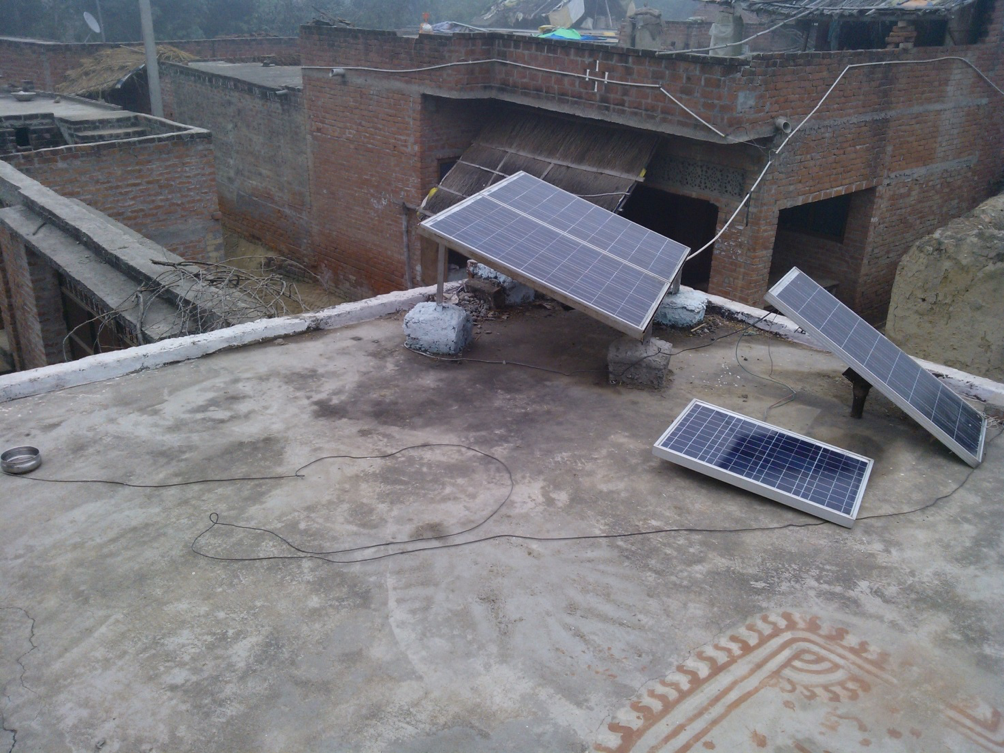Blog

Access to truly green energy technologies with sufficient quality is a critical issue for the poorest.
In a country where more than 250 million people live without access to electricity connection in their homes, and around as many live under two dollars per day, the questions on basic survival are the most striking. One needs to prepare food and use lighting in the evening, at least. I have had the privilege to visit a number of such peasant villages in northern India, in the state of Uttar Pradesh for a research project. The focus of my research has been the technical performance of micro-grid installations.
The micro-grids were working rather fine. For me as an engineer, remotely used micro-grids appear attractive as they are energy efficient: power delivery to long distances always causes power losses which are avoided when energy is produced close to consumers. Further, solar is a very suitable energy source for rural India. Firstly, there the sun shines bright at least 10 months of the year. Secondly, the air quality in the countryside is good, in comparison to large Indian cities with millions of people where pollutants reduce the efficiency of photovoltaic (PV) panels. Here, the villagers who previously had no electricity connections in their homes, could enjoy close to 24/7 access to electricity. For those connected to the local national grid this is unusual due to regular power cuts in the region.
However, when I climbed the roofs to inspect the PV panels of the micro-grid, I was surprised to find a number of smaller PV panels, positioned in the vicinity. They had been privately bought and mounted by the micro-grid-connected families, to power up extra appliances, such as extra lights or solar TVs. Solar home systems, solar lanterns and other solar gadgets are widely available in the markets in nearby towns.
Apparently some families had started to want for more than the micro-grid provided. The micro-grid in these villages had a maximum power limit (30 W) for instantaneous use. Three light bulbs were installed and screwed to the wall and there is a socket for private equipment such as mobile phone chargers. Certainly, what had happened was that the presence of the micro-grid and the solar entrepreneur representatives and technicians had made people more familiarized to solar lighting and solar electricity. Kerosene, that is widely used for lighting, is disliked by the villagers who are happy to welcome alternatives to it. The fumes makes you cough and stain the household walls dirty brown, just to start with. This definitely is a positive development. Solar has its benefits, especially because it is clean and environmental.


But there is more than the desire for more light bulbs. The encompassing poverty makes people extremely cost-conscious. During my visit I was immersed to observe the villagers alternating in real-time between a range of different energy sources, gadgets and devices. They use solar lanterns, solar home systems, single PV panels, micro-grid socket, flashlights, candles, kerosene lamps, portable batteries in all sizes, and biomass in all forms. Somebody had configured an old motorcycle battery to power up a radio. In the daytime, when the private and solo solar panels feed electricity, a mobile phone is charged. In the evening, the micro-grid LED bulbs are switched on because they give high-quality and bright light. Micro-grid electricity was being used very frugally. Low consumptions of solar micro-grid electricity is observed also in other studies.
Admittedly, once you have purchased a private solar gadget, the electricity is momentarily free-of-charge. However, I am not sure how aware the different parties are on the total and long-term costs of using these, rather cheaply manufactured, extra solar devices. Possibly not even the salesperson in the shop knows the actual lifetime of such a gadget. Observing different devices in the villages, I witnessed loose cabling, early cracks on panel surfaces, lacks of charge controllers, and battery leakages. If even one part of the gadget breaks, they become useless and must be replaced by a new one. The most hazardous component is the lead-acid battery that is included in nearly all solar systems. Lead is a toxic material, dangerous for humans and the environment. I hope all lead-acid batteries are properly disposed of and recycled, in order for the reputation of the solar technology to remain green.
Sini Numminen is a PhD student at Aalto University, Finland, studying reliability and sustainability of off-grid solar energy technologies
